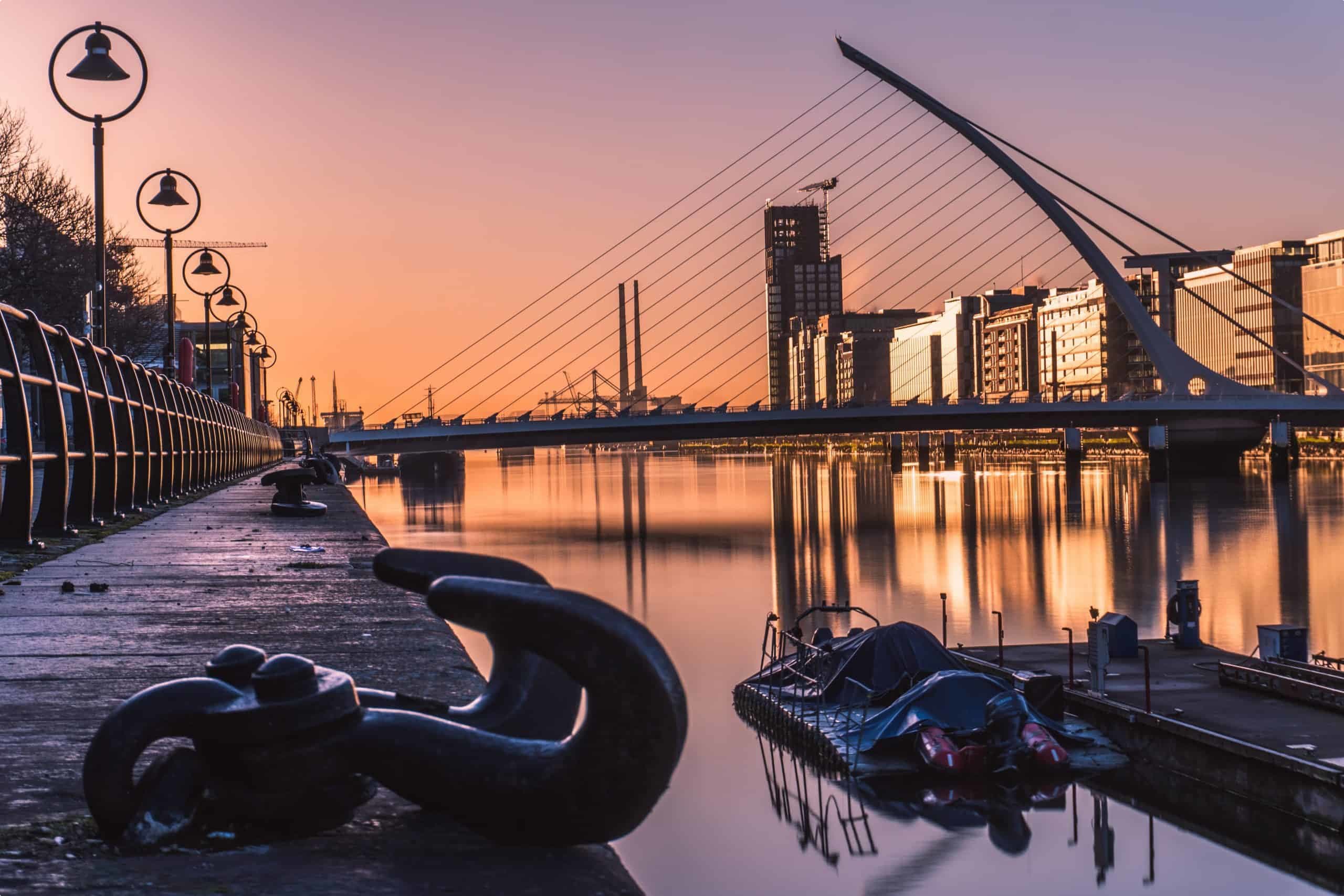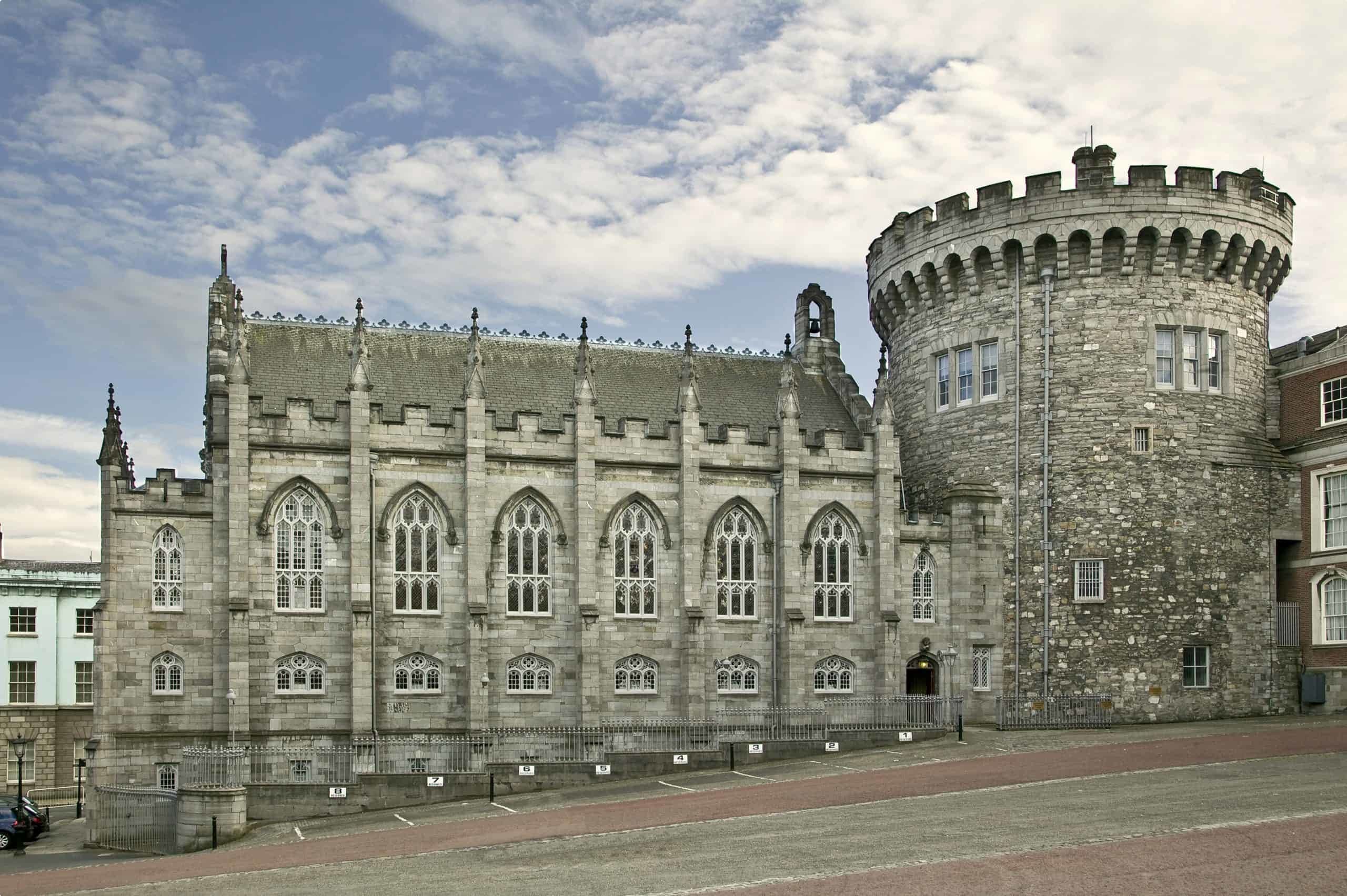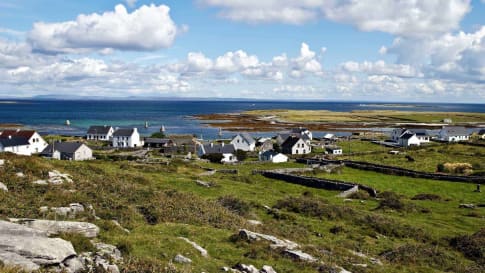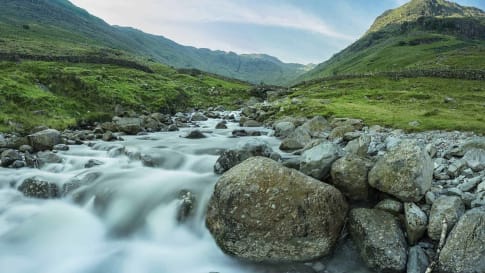Dublin, Ireland
Famed for poets, playwrights, and pubs, Dublin is a city of contrasts: home to some of the English language's greatest writers, the city is also known for its down-to-earth pub culture; the heart of modern, prosperous Ireland.
16 Apr 20 · 5 mins read

Dublin, Ireland

Famed for poets, playwrights, and pubs, Dublin is a city of contrasts: home to some of the English language’s greatest writers, the city is also known for its down-to-earth pub culture; the heart of modern, prosperous Ireland, Dublin is also where the scars of Ireland‘s history of colonisation are made most apparent.
Ironically for the city long at the heart of Irish history, Dublin (from the Irish Dubh Linn; Norse Dyfflin) was established by Viking settlers in Ireland in the 9th century. Building on the south bank of the River Liffey, where Dublin Castle is today, the Norse established a prosperous city. Following the beginning of rule from Great Britain, Dublin declined, until by the 17th century, the city was a small town of only 9,00o inhabitants.
From this not particularly auspicious start, Dublin would prosper through the 18th century, becoming the second city of the British Empire. Growth extended beyond the city walls, establishing the famous elegant neighbourhoods of Georgian Dublin that define the city today. Trinity College became a centre of Enlightenment thought. However, while the Anglo-Irish elite prospered, the majority of Irish people – Catholics disenfranchised by harsh penal laws that hindered their right to own property, be educated, or enter the professions – remained in poverty.
The 1801 Act of Union abolished Ireland’s parliament, thus diminishing Dublin’s status. The city’s Georgian houses became slums, debtors filled the prisons, and after the Potato Famine, the city became a magnet for peasants from rural Ireland.

The late 19th century saw Dublin become a centre of nationalist and cultural ferment. The poet W.B. Yeats established the Abbey Theatre, which staged nationalist plays and nurtured the great writers of the Irish Literary Revival. At the same time, young Irish men and women joined societies to learn Gaelic and preserve traditional Irish sports such as hurling. Their activities paid the way for the 1916 Easter Rising, in which nationalists seized the General Post Office, proclaiming the Republic of Ireland. The brutal put down of the Rising by the authorities, including the execution of its leaders, galvanised Irish support for independence from Great Britain, leading to the outbreak of the Irish War of Independence in 1919. The Irish Free State was established in 1921, and Ireland became independent of the United Kingdom in 1949.
Today, with over a quarter of Ireland’s population, Dublin is a vibrant and prosperous city. Nonetheless, the city’s turbulent past is etched into its fabric. Dublin Castle has long been among the most widely-hated of Irish castles – a symbol of occupation and oppression for the Irish Catholic majority, its inhabitants regarded it as dank, outdated, and uncomfortable! It’s nonetheless worth a tour to see the elegant Georgian rooms, now used by Taoiseach Leo Varadkar – the leader of the Irish government – to entertain dignitaries and official guests.
If you want to learn about Irish history, a visit to Kilmainham Gaol is a must. This bleak structure, built in 1796, has borne witness to virtually every Irish uprising since. Prisoners here have included Robert Emmet, Charles Stewart Parnell, and the leaders of the 1916 uprising, 14 of whom (out of the total number of 15 deaths) were shot in the prison yard here.
Dublin is also one of the world’s great cities of literature, home to great writers including Jonathan Swift, Oscar Wilde, and Samuel Beckett. The writer most indelibly linked with the city is James Joyce, whose Dubliners, The Portrait of the Artist as a Young Man and Ulysses are set in a vividly rendered Dublin. Ulysses, generally acclaimed as one of the greatest works of literature in the English language, traces the day in the life of two Dubliners, Leopold Bloom and Stephen Dedalus. Joyce was determined to accurately depict the city in his novel, and Bloom’s and Dedalus’s paths through the city can be easily traced on a fascinating literary walking tour.

Literary and intellectual Dublin can also be soaked up in the elegant buildings of Trinity College, in the heart of Georgian Dublin. The Old Library – the towering shelves of which seem like a figment of a bibliophile’s dream – is the main draw here, home to the beautiful illuminations of the ancient Book of Kells.
Dublin is also famous for its vibrant pub culture. While the legendary Temple Bar can be a bit touristy these days (particularly on St Patrick’s Day), if you head into the neighbourhoods, you’ll find local institutions where the clientele has been unchanged for years. Make sure to order a Guinness and head to the Guinness Storehouse to see how the legendary stout is produced.
Odyssey Traveller visits Dublin as part of our Tour of Ireland. Taking in the entirety of the island of Ireland, both the Republic of Ireland and Northern Ireland, our guided tour winds clockwise around the Emerald Isle. We begin in Dublin, where we see historic highlights including St Patrick’s Cathedral, Dublin Castle, and Trinity College. Our time in Dublin also includes a day tour to the ancient monastic settlement of Glendalough, in the Wicklow Mountains.
Leaving Dublin city, our escorted tour heads to County Cork, visiting the Rock of Cashel and Blarney Castle (home to the famous Blarney Stone) on the way. Our coach tour then winds its way up through the rugged scenery of the Wild Atlantic Way. Beginning in Killarney, Kerry, we see the stunning scenery of Killarney National Park, the Ring of Kerry, and the Dingle Peninsula. Heading north, our guided tour visits the Cliffs of Moher, Bunratty Castle, and the Burren in County Clare, before we travel to the remote Aran Islands. In Galway City we enjoy traditional music and make a day trip to Kylemore Abbey and Connemara National Park to soak up the fascinating history and beautiful country of surrounding Galway county. Our trip through the Wild Atlantic West ends in remote County Donegal, following which we head into Northern Ireland to see the remarkable formations of the UNESCO World Heritage Giant’s Causeway, before concluding our tour of Ireland by exploring the tragic history of the Troubles in Derry and Belfast.
If you’re interested in a tour of Ireland, why not join an Odyssey Traveller escorted tour? We’ve been specialising in quality tours for mature and senior travellers since 1983. We don’t just shuttle you from the Blarney Castle to the Cliffs of Moher to the Giant’s Causeway in a day, but take our time to soak up the history and culture of our destinations. We move in small groups of around 6-12 and are led by expert local guides. If that interests you, click here for more information and follow us on social media (Facebook).
Articles about Ireland published by Odyssey Traveller:
- History of Ireland
- Ireland’s Gems
- Learning about Ireland for Seniors
- How The Atlantic Ocean Shaped Early Life in Europe
For all the articles Odyssey Traveller has published for mature aged and senior travellers, click through on this link.
External articles to assist you on your visit to Ireland:
Related Tours

18 days
Aug, Apr, SepSmall Group tours exploring the Treasures of Ireland
Visiting Ireland
An escorted small group tour to Northern Ireland & Ireland, with local guides and itineraries that give authentic experiences Ireland's capital, Dublin, including 1/2 day tour of St Patricks cathedral and Trinity college. Destinations also Aran islands , Kerry plus the world heritage site, the giant's causeway. Ireland tours for singles over 50 and couples.
From A$12,615 AUD
View Tour10 days
MayGardens of Ireland Small Group Tour
Visiting Ireland, Northern Ireland
Ireland a land of diverse and rich gardens from the dramatic Powerscourt to the impressive kitchen Garden of Kylemore Abbey and the secretive Anne’s Grove. Visit Dublin's historic Botanic Garden to the greenness of Killarney with its rugged Kerry peninsula and charming Muckross House.
From A$9,445 AUD
View Tour
25 days
AugIreland and Lake District walking small group tour
Visiting England, Ireland
A guided small group tour for senior walkers that starts in the capital of Ireland, Dublin. This escorted tour with local guides also explores the Giant's causeway, a UNESCO World heritage site. It transfers from Ireland to Scotland to head to walk in the National park of the Lake district.
From A$14,850 AUD
View Tour

